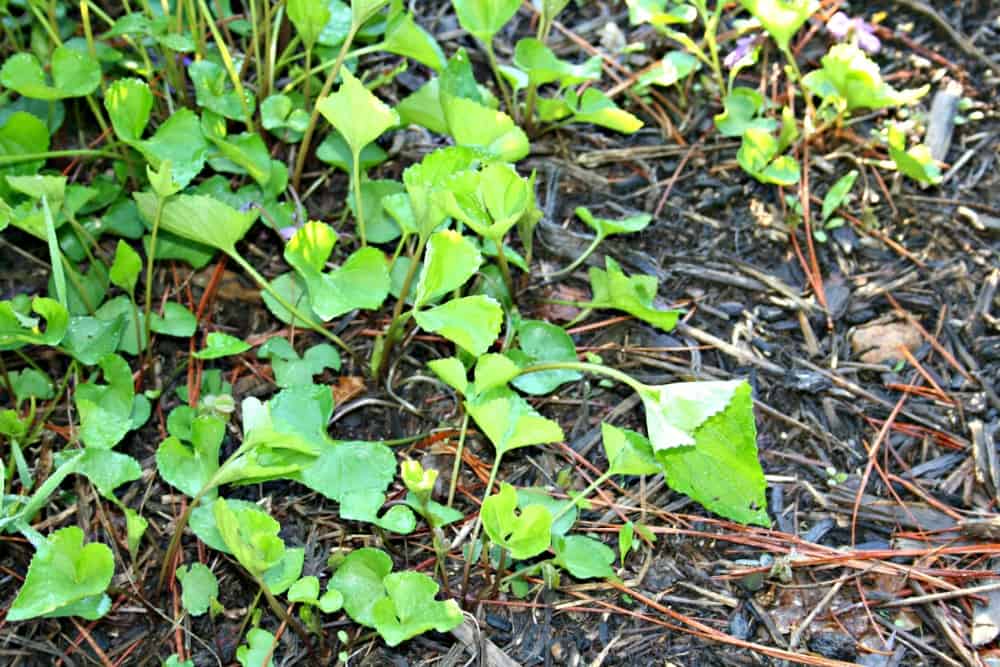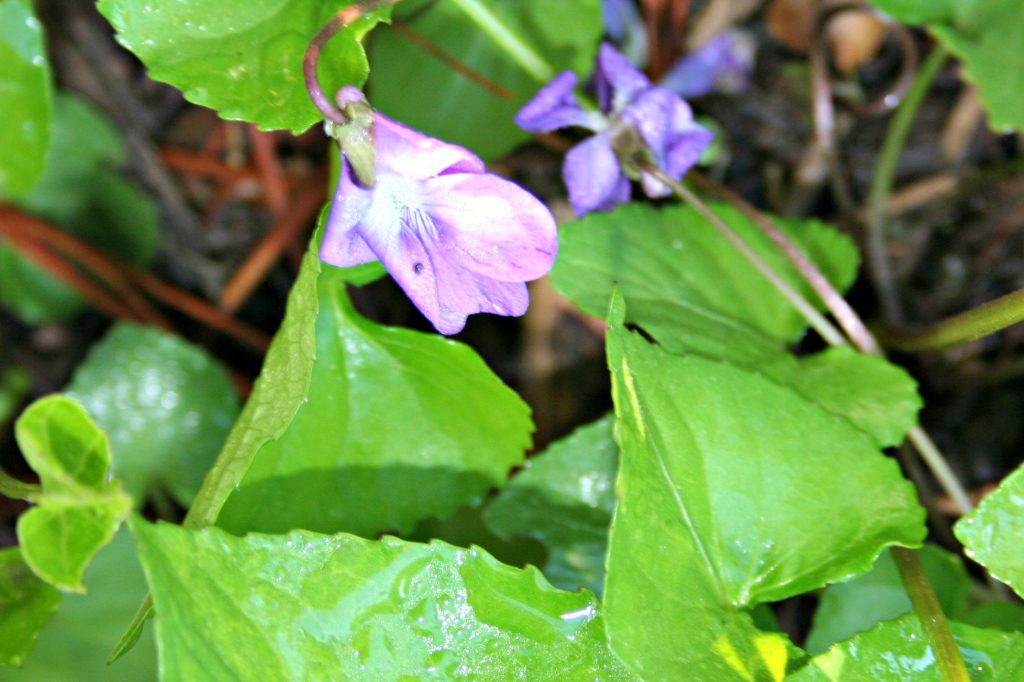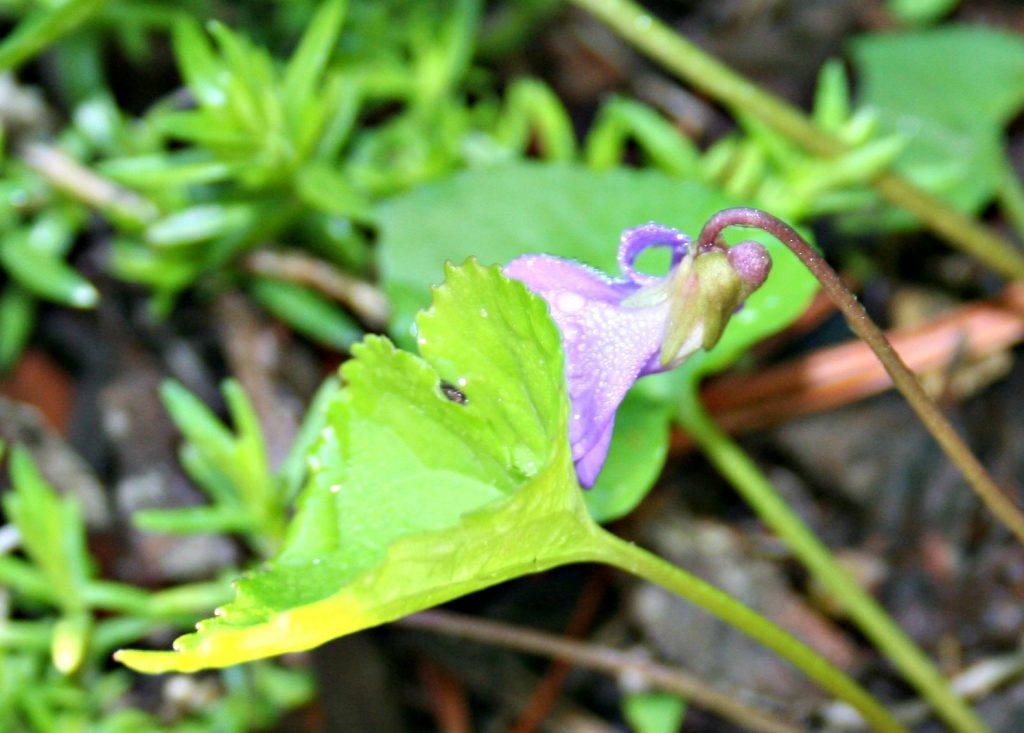This morning, I had all intentions of harvesting my wild violets and using them to make candied violets and violet tincture. Then I saw some posts from Marlene at The Herbal Academy, and I reconsidered foraging my beautiful violets. Here’s why.

Wild Violets in the Garden
I love violets, violas, and anything in that plant family. In fact, pansies were my wedding flower, and if there is such a thing as a spirit flower – or a plant that reflects our own essence – the sweet Violet sororia or pansy (Viola tricolor var. hortensis) are my life companions, somehow reflecting the essence of who I am.
I love them. I had pansies sprinkled on my wedding cake. My father in law used to try to pull up the wild violets in the garden, but violets have the last laugh. The wild violet spreads through runners or stolons much like strawberries. New plants are already forming underground before you see their progenitors rising from the soil.
Wild violets have heart-shaped leaves and deep purple flowers. In my part of the world, south central Virginia, they appear in April and may come back in the summer and even the fall.
There’s another violet growing plentifully along the forest edges here on Seven Oaks Farm – Confederate Violet (Viola sororia f. priceana). It is characterized by lighter purple flowers with deep purple veins. Native to the south, it is relatively rare in northern climates, which is probably why I was only introduced to this lovely little wildflower a few years after moving to my farm in Virginia.
[Tweet “Over harvesting wild plants is a growing concern. #foraging #homegardenjoy”]
Harvesting Wild Violets – Foraging
I was looking forward to foraging for wild violets this spring. It’s an easy plant to recognize in the garden; all varieties of violets are edible. (African violets are from the plant family Saintapaulina and are not true violets – and are not edible.)
The flowers can be eaten fresh or in salads. The flowers and leaves can be made into tinctures or salves. Flowers can also be used to make sweetly scented sugars, something I thought would be fun to play with in the kitchen.

Foraging Considerations
What changed my mind? Marlene’s post in The Herbal Academy newsletter.
In it, Marlene talks about the ethics of foraging. Foraging is trendy right now. There are classes, books, online courses and more dedicated to foraging. People encourage foraging in woods, forests, fields and gardens.
There’s nothing wrong about foraging per se. Dandelions foraged from the garden are tasty, nutritious, and a great way to weed and get more vitamins at the same time.
However, over harvesting is a concern. While it is true that it would be difficult to over-harvest wild violets, I don’t want to chance it.
I look down at the patches of my little violets and cheer. I really love these little plants. Do I really need yet another tincture in my cupboard? More hand salve?
No, foraging the violets would only satisfy my own creative urges, and I can easily play with herbs already growing in my garden.
I decided to forgo foraging for the day and leave the wild plants alone. Surprisingly, the plentiful flowers disappeared seemingly overnight as if the plant knew I intended to harvest it. Instead, the few flowers nodding in the heavy dew this morning were closed, withdrawn, hidden.
I reassured the violets that I didn’t intend to harvest them today. But I am glad that Marlene’s post got me thinking about it. Now I can enjoy them yet another day.





